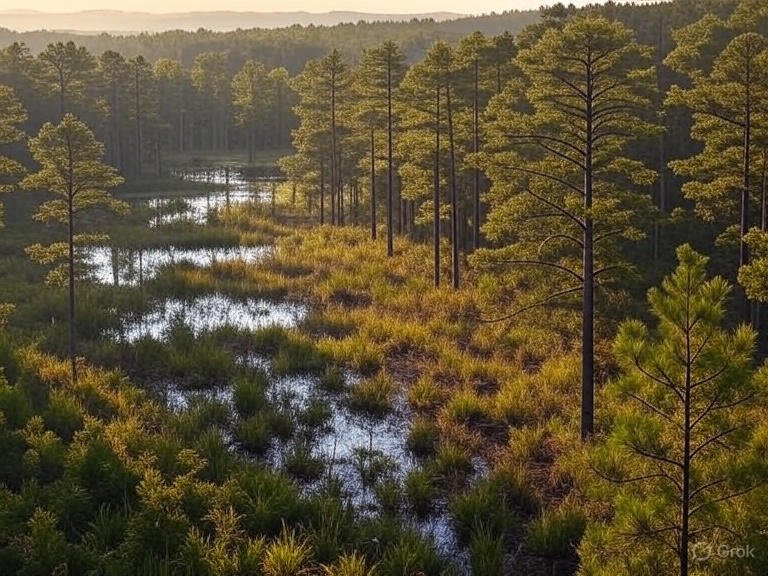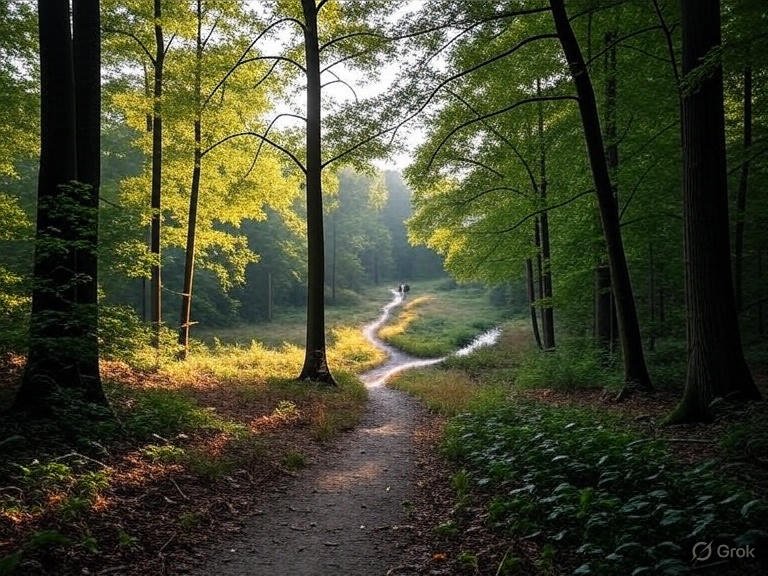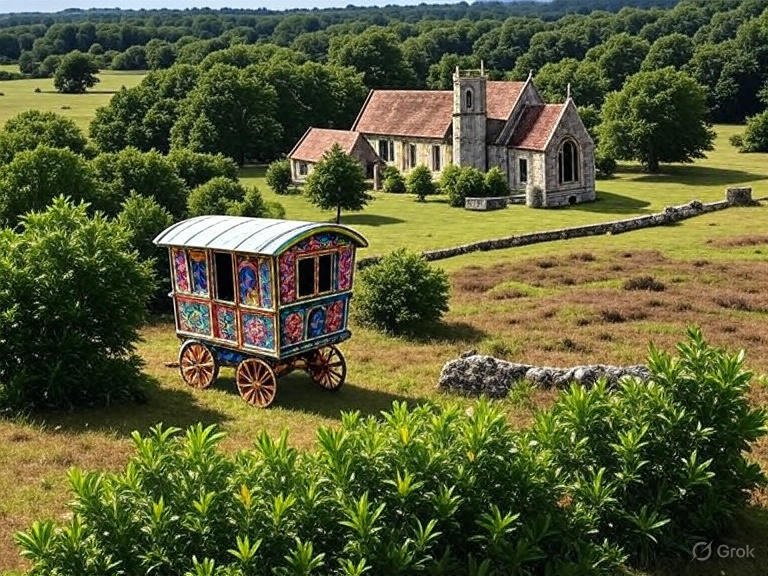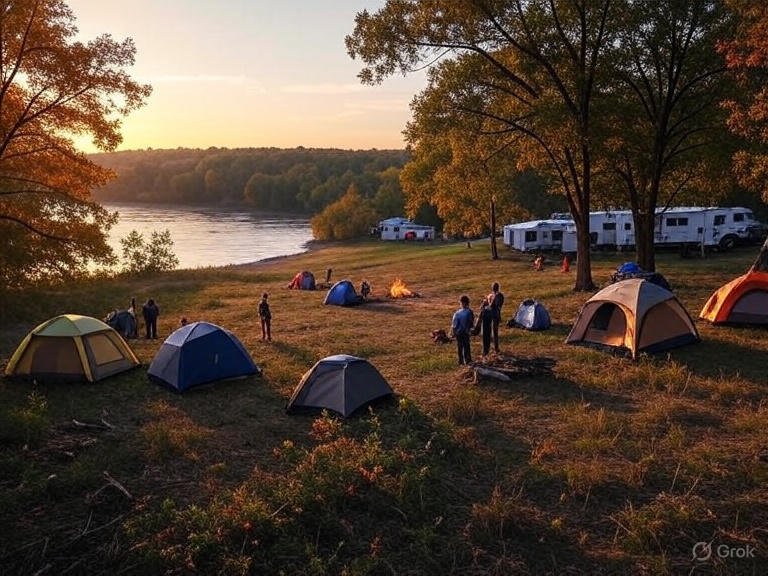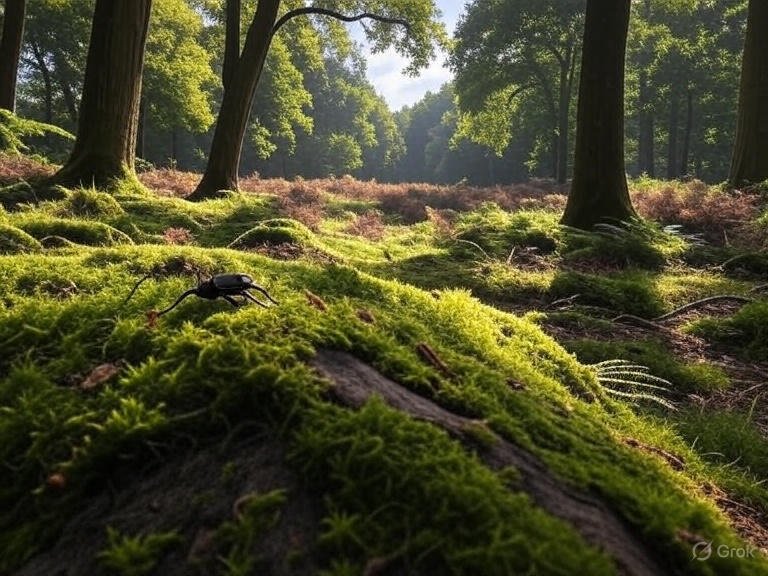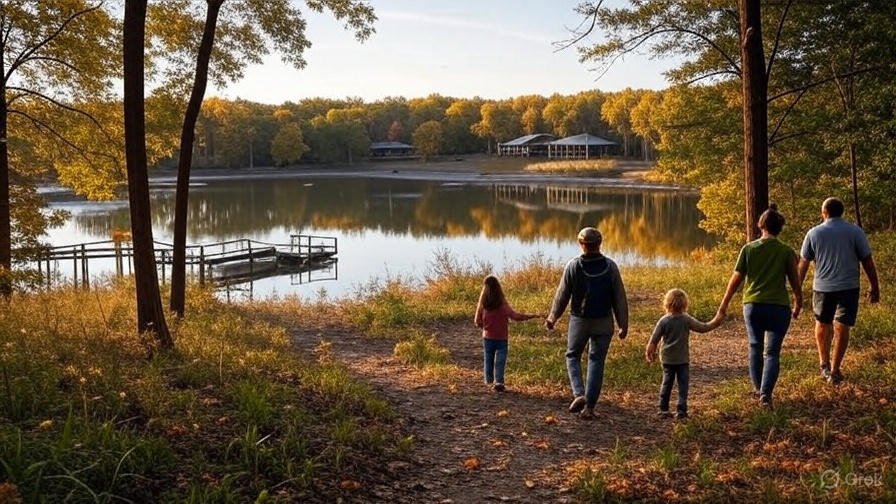Hofmann Forest is a huge forest in North Carolina. It covers 79,000 acres. That makes it the biggest forest owned by a university in the world. North Carolina State University, called NC State, owns it. The forest is in Jones and Onslow counties, near a town called Jacksonville. It’s a special place for students to learn, scientists to study, and animals to live. The forest has pine trees, wet areas called wetlands, and lots of animals. My name is Douglas Baltes. I studied sea life at the University of Tasmania. For five years, I learned about oceans and helped save kelp forests with the Australian Marine Conservation Society. I use what I know to tell you why Hofmann Forest is so important.
Why Is Hofmann Forest So Cool?
Hofmann Forest is not just big. It’s like a giant outdoor school. Students and scientists come here to learn about trees, water, and animals. The forest has pine tree farms, regular trees, and a big wetland called the Big Open Pocosin. These places help people study nature. The forest also makes money by selling trees and growing crops. This money helps NC State’s College of Natural Resources pay for student help and studies.
The forest is great for animals, too. Black bears walk through it to get to other places, like Camp Lejeune. This helps animals as the weather changes. The forest also cleans water before it goes to rivers like the White Oak, New, and Trent. Clean water helps fish and other sea animals. My work with kelp forests in Australia shows how places like Hofmann keep nature safe.
How Did Hofmann Forest Start?
In 1934, a man named Dr. Julius V. Hofmann made the forest. He was a tree expert at NC State. A group called the North Carolina Forestry Foundation bought the land to make a place for students to learn. In 1977, NC State took over the forest to help its College of Natural Resources. The forest has been used for trees, teaching, and studies ever since. In 2013, there was a plan to sell the forest. Many people, like students and nature fans, worked hard to stop it. They won, and NC State kept most of the forest safe.
Learning in Hofmann Forest
Hofmann Forest is a busy place for learning. Students and teachers study how to take care of forests without hurting them. They try ways to grow trees, keep water clean, and help animals. The forest has pine tree farms and natural areas, which are perfect for tests. For example, a project called the Hofmann Open-Water Laboratory, or HOWL, lets local people help check water. This shows how the forest keeps rivers clean.
Scientists also study climate change here. The forest’s wetlands hold something called carbon. This helps slow down global warming. My work with kelp forests taught me that wetlands and kelp both clean water and help animals. Hofmann’s studies help us learn how to keep these places safe.
What Do People Study Here?
- Growing Trees: They learn how to plant and cut trees carefully.
- Clean Water: They check how the forest keeps rivers healthy.
- Animals: They follow black bears to keep their homes safe.
- Climate: They study how wetlands help stop climate change.
Keeping Nature Safe in Hofmann Forest
Hofmann Forest is a big helper for nature. About 18,000 acres are wetlands called the Big Open Pocosin. These wetlands have special plants and animals. They also clean water for rivers. In 2015, NC State made a plan to keep most of the forest safe. They made a 50-year deal with a group called Resource Management Service, or RMS, to take care of 54,000 acres of pine trees. This deal makes sure new trees are planted after old ones are cut.
The plan also keeps the Big Open Pocosin safe with special rules called conservation easements. These rules stop people from building on the wetlands. Another 4,000 acres near U.S. Highway 17 are being looked at. Some worry this land might get buildings, which could hurt animals. My work in Australia showed me how important it is to keep paths open for animals. Keeping this land safe is important for bears and other animals.
How the Forest Helps Nature
- Safe Wetlands: 18,000 acres of wetlands are protected.
- Careful Tree Cutting: The RMS deal makes sure trees are grown and cut safely.
- Animal Paths: The forest helps animals move to other places.
- Military Training: The Navy and Marines train here without hurting nature.
Why the Forest Matters for Nature

Hofmann Forest is super important for North Carolina. Its wetlands clean water before it goes to rivers. This helps fish and sea animals in coastal areas. The forest is home to black bears, alligators, and special plants like Atlantic white-cedar. These animals and plants need big spaces to live. Hofmann’s 79,000 acres give them that space.
The forest is in a great spot. It’s near Jacksonville and Camp Lejeune. This makes it a bridge for animals to travel along the coast. As the weather gets hotter, animals need to move to cooler places. Hofmann Forest helps them do that. My work with the Great Southern Reef showed me how connected places help animals and plants. Hofmann’s wetlands and trees are key for keeping nature strong.
Animals and Plants in the Forest
- Black bears walk through to get to other places.
- Alligators live in the wetlands and creeks.
- Special plants, like Atlantic white-cedar, grow in wet areas.
- Tiny mussels in nearby rivers need the forest’s clean water.
Problems the Forest Had
In 2013, NC State wanted to sell Hofmann Forest for $150 million. A company from Illinois planned to turn 45,000 acres into cornfields and build golf courses and houses. This made many people upset. Students, teachers, and groups like Dogwood Alliance spoke out. They sent thousands of letters to stop the sale. People like Ron Sutherland and Fred Cubbage even took NC State to court. They said the sale broke rules about keeping public land safe.
The sale didn’t happen because the buyer couldn’t pay. In 2015, NC State made a new plan. They kept the forest and worked with RMS to grow trees carefully. They also protected 18,000 acres of wetlands. Some people still worry about the 4,000 acres near U.S. Highway 17. Building there could block animal paths. My work in Australia showed me that balancing people’s needs and nature is hard. Talking with everyone helps find good answers.
Problems the Forest Faced
- Sale Plan: In 2013, the plan to sell the forest made people upset.
- Building Worries: The 4,000 acres near U.S. Highway 17 might get buildings.
- Who Can Use It: Some worry tree deals limit who can visit.
- Open Talks: Past plans didn’t ask enough people for ideas.
How the Forest Helps Students
Hofmann Forest is like a big school for NC State students. They learn how to care for forests, study animals, and keep water clean. The forest’s size lets them try ideas in a real place. For example, students learn how to grow trees without hurting the land. They also study how wetlands help nature. The forest makes about $3 million a year from selling trees. This money pays for student help and studies.
My work in Australia showed me how learning by doing helps students. I led projects where students planted kelp to save reefs. Hofmann Forest does the same for trees. Students practice what they learn, which gets them ready for jobs.
Learning Benefits
- Real Practice: Students try tree care in the forest.
- Money for School: Tree money helps pay for student costs.
- Studies: The forest helps students learn about trees and animals.
- Job Skills: Students learn how to work in forestry and nature jobs.
How the Forest Helps Money
Hofmann Forest makes money for NC State. In 2016, they signed a $78 million deal with RMS for 54,000 acres of pine trees. This deal lasts 50 years. The money helps the College of Natural Resources with teaching and studies. The forest also has 1,600 acres of farmland and 450 acres of special areas called mitigation banks. These banks protect wetlands and make money.
The forest helps people nearby, too. Cutting trees and farming give jobs to people in Jones and Onslow counties. The military trains in the forest, which helps bases like Camp Lejeune. My work in Australia showed me that saving nature can help people earn money. Hofmann Forest does both.
Money Benefits
- Tree Money: $78 million over 50 years helps NC State.
- Local Jobs: Tree cutting and farming give work to nearby people.
- Military Help: Training in the forest supports bases.
- Special Banks: These areas protect wetlands and make money.
Why Hofmann Forest Is Special
Hofmann Forest is one of a kind because of its size and jobs. At 79,000 acres, it’s the biggest university forest in the world. No other school has a forest this big for learning. The mix of pine trees, wetlands, and regular trees makes it a great place to study. It also keeps animals and water safe in a way few forests can.
The forest’s story of people helping out makes it special. In 2013, people worked together to stop the sale. This shows how much the forest means to everyone. My work with the Great Southern Reef taught me that people can save nature by working together. Hofmann Forest shows this, too.
What Makes It Special
- Big Size: 79,000 acres, bigger than other school forests.
- Lots of Variety: Pine trees, wetlands, and regular trees in one place.
- People’s Help: People saved the forest from being sold.
- Animal Paths: It helps animals move along the coast.
Plans for Now and Later
NC State takes good care of Hofmann Forest. The 2016 deal with RMS makes sure trees are grown and cut carefully. The university is working to keep the Big Open Pocosin safe with special rules. The Department of Defense might buy rights to train on 70,000 acres. This would keep the land safe from buildings.
The 4,000 acres near U.S. Highway 17 are still a worry. NC State is deciding what to do with them. Nature fans want to keep this land safe for animals. My work in Australia showed me that planning with scientists, locals, and leaders is important. NC State is working with The Conservation Fund to make fair plans for learning, nature, and money.
Plans for the Future
- Keep Wetlands Safe: Protect the Big Open Pocosin.
- Careful Tree Cutting: Grow and cut trees the right way with RMS.
- Animal Paths: Keep the 4,000 acres safe for animals.
- Open to Students: Make sure students and scientists can use the forest.
How Hofmann Compares to Other Forests
Other school forests are smaller. Harvard Forest is 4,000 acres, and Duke Forest is 7,000 acres. They study nature but don’t have Hofmann’s wetlands or size. The University of Washington’s Pack Forest is 4,300 acres and focuses on trees, but it doesn’t connect to coastal areas. Hofmann’s mix of learning, nature, and money makes it different.
My work with the Great Southern Reef showed me that special places need special care. Hofmann Forest is one of a kind. Its size and spot make it a leader in tree studies and nature protection.
How It Compares
- Harvard Forest: 4,000 acres, studies nature, less variety.
- Duke Forest: 7,000 acres, studies only, no big wetlands.
- Pack Forest: 4,300 acres, tree focus, no coastal paths.
- Hofmann Forest: 79,000 acres, lots of variety, helps NC State.
Help from People and Groups
Hofmann Forest was saved by people working together. In 2013, groups like Dogwood Alliance and Wildlands Network fought the sale. Ron Sutherland and Fred Cubbage led the way. They won Pelican Awards from the N.C. Coastal Federation for their work. Students, locals, and teachers sent thousands of letters to leaders like Attorney General Roy Cooper. This teamwork kept the forest safe.
My work in Australia showed me how people can save nature. Locals helped save kelp forests there. In Hofmann, people did the same for wetlands and trees. This shows how working together helps.
Who Helped Save the Forest
- Ron Sutherland: A nature expert who led protests and court fights.
- Fred Cubbage: A teacher at NC State who fought for the forest.
- Dogwood Alliance: A group that got people to act.
- N.C. Coastal Federation: Gave awards to leaders for their work.
How to Learn More or Visit
Hofmann Forest is mostly for students and scientists, not everyone. Some areas are used for military training or tree cutting. The HOWL project lets local people help check water. To learn more, go to NC State’s College of Natural Resources website. You can also read about the forest on Dogwood Alliance or Coastal Review websites. My work with nature groups taught me that sharing what you know helps protect places. If you want to learn about Hofmann Forest, contact NC State or local nature groups. They can tell you how to help or visit safely.
Ways to Get Involved
- Visit NC State’s Website: Learn about studies and how to visit.
- Join HOWL: Help check water as a volunteer.
- Read News: Check Dogwood Alliance for updates.
- Help Nature: Give to groups like the N.C. Coastal Federation.
Conclusion
Hofmann Forest is a very special place. Its 79,000 acres make it the biggest university forest in the world. It helps students learn, keeps animals safe, and cleans water for rivers. In 2013, people worked together to save it from being sold. Now, NC State and groups like The Conservation Fund keep it safe. My name is Douglas Baltes. My five years studying sea life show me why places like Hofmann are important. This forest is a treasure for North Carolina and the world. Let’s keep it safe for the future.
Disclaimer: This article about Hofmann Forest is for informational purposes only. It is based on publicly available data and the author’s expertise in marine biology and conservation. The information reflects current knowledge as of August 2025 and may change. The author, Douglas Baltes, and any associated entities are not responsible for any errors, omissions, or outcomes from using this information. For official details or access to Hofmann Forest, contact NC State’s College of Natural Resources or relevant authorities. Always verify information with trusted sources before making decisions.
Explore More:
East Branch Forest Preserve: Discover Illinois’ Big 521-Acre Wetland and Dog-Friendly Spot
Enchanted Forest Sanctuary Titusville: Discover Rare Florida Wildlife & Hidden Trails
Heron Creek Forest Preserve: Bird Paradise & Trails in Lake County’s Wetlands Habitat

Douglas Baltes is a writer who loves the ocean! He has worked for five years to learn about it. He writes fun stories about the Great Southern Reef in Australia, a big place with giant kelp forests under the water. Douglas has a degree in Marine Biology from the University of Tasmania, so he knows a lot about sea life! He works with nice groups to save the kelp forests. Douglas writes easy and exciting stories about them. He also leads happy projects to help the forests grow again. The Australian Marine Conservation Society loves his work!
